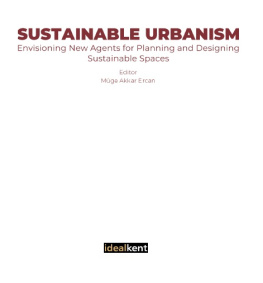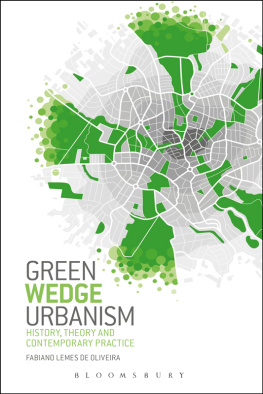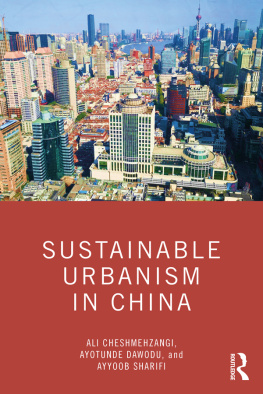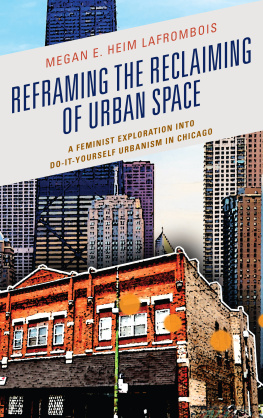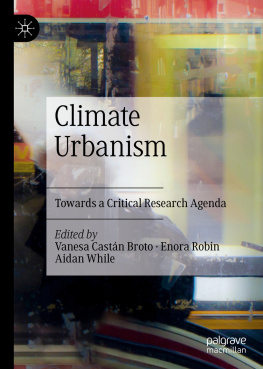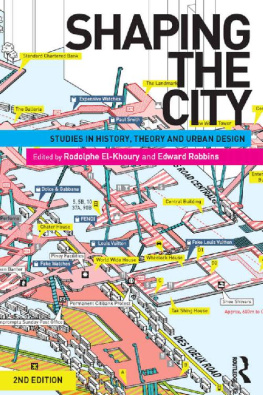DEMYSTIFYING DOHA
Demystifying Doha
On Architecture and Urbanism in an Emerging City
Ashraf M. Salama and Florian Wiedmann
Qatar University, Doha, Qatar

First published 2013 by Ashgate Publishing
Published 2016 by Routledge
2 Park Square, Milton Park, Abingdon, Oxon OX14 4RN
711 Third Avenue, New York, NY 10017, USA
Routledge is an imprint of the Taylor & Francis Group, an informa business
Copyright 2013 Ashraf M. Salama and Florian Wiedmann.
Ashraf M. Salama and Florian Wiedmann have asserted their rights under the Copyright, Designs and Patents Act, 1988, to be identified as the authors of this work.
All rights reserved. No part of this book may be reprinted or reproduced or utilised in any form or by any electronic, mechanical, or other means, now known or hereafter invented, including photocopying and recording, or in any information storage or retrieval system, without permission in writing from the publishers.
Notice:
Product or corporate names may be trademarks or registered trademarks, and are used only for identification and explanation without intent to infringe.
British Library Cataloguing in Publication Data
A catalogue record for this book is available from the British Library
ISBN: 978-1-409-46634-5 (hbk)
Library of Congress Cataloging-in-Publication Data
Salama, Ashraf M. A.
Demystifying Doha : on architecture and urbanism in an emerging city / by Ashraf
Salama and Florian Wiedmann.
pages cm
Includes bibliographical references and index.
ISBN 978-1-4094-6634-5 (hardback) -- ISBN 978-1-4094-6635-2 (ebook) -- ISBN 978
1-4094-6636-9 (epub) 1. Architecture--Qatar--Dawhah. 2. Urbanization--Qatar
-Dawhah. 3. City planning--Qatar--Dawhah. 4. Dawhah (Qatar)--Social conditions. I.
Wiedmann, Florian. II. Title.
NA1473.6.D39S25 2013
720.95363--dc23
2013009605
Contents
About the Authors
Ashraf M. Salama is a Full Professor of Architecture and the founding Chair, Department of Architecture and Urban Planning, College of Engineering, Qatar University. He holds B. Arch., M. Arch., and Ph.D. from the Al Azhar University in Egypt and North Carolina State University, USA (1987, 1991, 1996). He has held permanent, tenured, and visiting positions in Egypt (Misr International University and Al-Azhar University), Italy (University of Naples Federico II), Saudi Arabia (King Fahd University of Petroleum and Minerals), and the United Kingdom (Queens University, Belfast). With extensive experience in academic research, teaching, design and research based consultancy, Dr Salama bridges theory and design and pedagogy and practice in his professional activities. He was the Director of Consulting at Adam Group Architects in Charlotte, North Carolina. He is the chief editor of International Journal of Architectural Research-IJAR and associate editor of Open House International-OHI. Professor Salama serves on the scientific and review boards of several international organisations, including IAPS-the international association of people-environment studies, and international association of human habitat. Professor Salama has authored and co-edited six books in the field of architectural and urban pedagogy, and has published over hundred articles in the refereed international press on architecture, urban design, and human-environment interactions. His current work places emphasis on urbanism in emerging regional metropolises in the Middle East with a focus on timely and pressing issues including qualities of urban open spaces, urban identity, and assessing designed environments.
Florian Wiedmann is a Postdoctoral Research Fellow at Department of Architecture and Urban Planning, College of Engineering, Qatar University. He graduated from the Technical University of Dresden (2003) and the University of Stuttgart (2006) with a Masters degree in Architecture and Urban Planning. After completing his Masters dissertation on the urban development of Dubai, he continued his research on urbanism in the Gulf region at the University of Stuttgart between 2007 and 2010. His study focused on the various aspects needed for sustainable urban growth in Gulf cities with a focus on the Kingdom of Bahrain and the Emirate of Dubai as case studies. In 2009, he accepted a position as an urban planner at the consultancy Albert Speer & Partner in Frankfurt, where he took part in designing the strategic master plan for 6th of October City, a satellite city of Cairo, for the Egyptian Ministry of Housing. He has also worked on site plans for the Diplomatic Quarter of Riyadh as well as on the re-design of the Siemens Headquarters in Munich. In 2011, Dr Wiedmann accepted a postdoctoral position at Qatar University for an extensive research project funded by the Qatar National Research Fund in which he is currently investigating the various ways economic diversification impacts urban structures in Doha.
List of Illustrations
Credit: All figures and photographs are the property of the authors unless otherwise noted.
List of Tables
Preface
The city of Doha, the capital of Qatar, is an important emerging regional and global capital in the Middle East; the city is attracting international attention in various areas from the oil and gas sector, to sports and culture, and to regional and international politics and policy initiation. Doha continues to reinvent itself with different degrees of expressions of its unique qualities in terms of economy, environment, culture, global outlook, and future prospects on the map of international architecture and urbanism. Over the past decade, Qatar has become one of the most important producers and exporters of Liquefied Natural Gas (LNG) in the world. The wealth produced by Qatars oil and gas exports has generated a construction and urban development boom in Doha and its surrounding vicinity. This has resulted in significant growth at all levels including diverse forms of urban development and infrastructure provision, the construction of impressive and iconic glass office towers, and the establishment of world-class cultural and educational facilities. This book explores Dohas intensive urbanisation and development from historical, and contemporary architectural and planning perspectives.
Until now there has been neither literature reflecting on the peculiarities of urban development in Doha holistically nor investigations as to how the city is built and what mechanisms and roots are driving its urbanism. Since the late 1990s, the number of inhabitants has grown from less than 400,000 to more than 1.7 million today. The recent construction boom has shaped a new Doha a city with a global facade of expanding high-rise clusters and attractive educational, cultural, leisure and entertainment spaces. While many architects and planners are impressed by the scale of the overall development in the city, in reality there has been rather little reflection on the factors and drivers instigating this new form of urbanism and its meaning and significance to future generations in Qatar and the Gulf region. Therefore, we embarked on a project to explore and develop a comprehensive study in response to the lack of in-depth debate on architecture and urbanism in this rapidly growing city.
The book fills an important gap in the contemporary literature while identifying a number of local and regional issues; it contextualises the discussion and subsequent analyses within a global perspective. Furthermore, it also anatomises the evolutionary process of urbanism in the city of Doha and examines the qualities and the complex nature of its contemporary architecture scene and the urban environment as they relate to inhabitants and decision-making processes. While establishing a pertinent and timely recommendation for the citys future sustainable urban growth, the book concludes with a framework that can be utilised to clarify, delineate and understand the future role architects, urban designers, and planners will have in shaping the future of the city and other cities that are witnessing similar development patterns.
Next page

